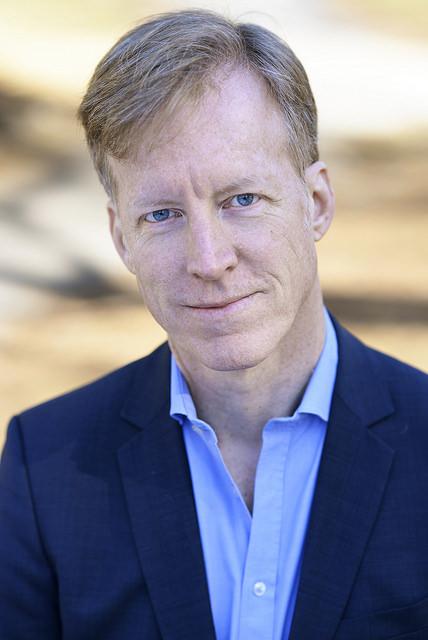Curt Rice wants just as many female as male Nobel candidates
We are a long way from closing the gender gap among Nobel Laureates. Curt Rice, Rector of the Oslo Metropolitan University and Chair of the KIF Committee, explained his solution for this to the Nobel Foundation in Sweden last week.
The self-image of Sweden and Norway as gender-equal countries is continually being challenged. A revolution against sexual harassment is underway in the Nordic region – in academia as well as in the cultural sphere and society at large – fueled by the #MeToo movement. Nor are the Nordic countries leaders in gender balance and diversity in the research sector, despite the best conditions for success.
The examples of inequality are often referred to as the Nordic paradox. Universities and university colleges, for instance, have a predominance of men in senior research positions, also when compared with working life in general.
In light of this, it is perhaps not strange that an extreme gender imbalance exists at the very top – among recipients of the Nobel Prizes. But Curt Rice, Rector of the Oslo Metropolitan University and Chair of the KIF Committee, believes this can be rectified and that the solution is rather simple.

Choose an extreme or moderate solution?
Rice was invited by the Nobel Foundation to give a presentation to all the Nobel committees on gender equality, why it is important and what can be done.
“An extreme solution would be to say that all the Nobel Prizes in the next 10 years must go to women,” says Rice.
“That would send a powerful signal! And it can be justified, quite simply because there is no problem finding highly qualified women!”
However, Rice recommends starting with a more moderate solution. He explains that the members of the committees at the Royal Swedish Academy of Sciences, the Swedish Academy, the Nobel Assembly at the Karolinska Institute and the Norwegian Nobel Committee also have a right to nominate candidates for the Nobel Prizes.
“But this right is hardly ever used. Imagine if they seized this opportunity to nominate candidates in order to achieve gender balance – that would be something! I think the goal should be a gender-balanced short list – in other words, that the potential Nobel prizewinners who the committees are left to choose among are evenly distributed between women and men.”
The Nobel Prizes receive many nominations, and the various committees cut their numbers down to a smaller group of qualified individuals, a so-called “short list”.
“If it’s between one woman and 19 men, it’s very likely that a man will win. But on the other hand, if it’s between 10 women and 10 men, the decision as to who wins will seem much fairer.”
According to Rice, a gender-balanced short list is a moderate solution.
“Do you think that the selection criteria are not appropriate?”
“No, I don’t think that, but in reality the criteria rarely point to only one winner. There will always be multiple candidates who are well qualified – including for a Nobel Prize,” says Rice.
“But isn’t the person who receives a Nobel Prize the best qualified within his or her field?”
“This is never the case. There is always more than only one highly qualified person,” says Rice.
“What is the first thing they could change?”
“The committees should be made aware of female candidates, and make sure the short lists are gender balanced. That would be a good start.”
“Gender imbalance is embarrassing”
Another reason that Rice keeps insisting on gender balance is that the alternative is embarrassing.
“You have been calling for a higher percentage of female Nobel prizewinners for a long time. Why?”
“These prizes are so visible. Like many others in Norway, I’m very proud of the Nobel Peace Prize. It’s just as moving each year to hear who won and to watch the award ceremony, so it’s embarrassing, quite simply, when the gender balance is so skewed.”
“But it’s even worse in the other prize categories. When we hear that only two women have received the Nobel Prize in physics and only four in chemistry, it’s almost as if they purposely avoid recognizing the work of women researchers.”
Rice also points out that Norway’s own Abel Prize has even worse statistics when it comes to prizewinners, since no women so far have received the prize.
“I want them to understand how crucial it is to have better gender balance, and how good female role models can help to attract more women to research.”
A complete lack of role models
Rice has several responses as to why it is so important to have the best possible gender balance. One of them has to do with role models, or rather, the lack of role models.
“Why is it important to fix the gender imbalance at the very top of the research sector? Isn’t there a bigger job to do earlier on, throughout the entire research career path?”
“These are closely related. I assume that pupils all the way from primary to upper secondary school learn about the Nobel Laureates in class. Maybe the pupils create projects with that year’s winners, or all the winners. If year in and year out they see mostly men on those lists, they will get a clear message: Women don’t belong there.”
“How will we then manage to, for example, recruit girls from upper secondary school to natural science when they don’t actually see any women in that field?”
“Why are the women so invisible? Do you think that the women are out there, but that the Nobel committees don’t see them?”
“There are highly qualified women, but the committees act as if they don’t know about them,” says Rice.
“Gender is legitimate”
Rice believes that those with power should not be so afraid to make structural changes.
“For example, I’ve heard African-Americans say about themselves: ‘Yes, I got in due to a quota system.’ But it’s important to know that this doesn’t mean a person is less qualified. On the contrary, a valid tool has been used to counteract homogeneity.”
“I imagine that each year the committee members are left with two to three potential candidates, and they are supposed to give reasons for choosing one over the other. They look for a difference between the candidates. For example, should it have to do with networks or publications, or should it be possible to talk about gender? It should be completely legitimate to talk about gender.”
“If there is a woman in this group, they should let gender balance be a criterion and choose her.”
Rice believes that there are tools for attracting more women to research.
“The Nobel Prize is actually a good tool – use it,” says Rice.
The Nobel Prize builds on other science awards
According to Rice, there are many explanations for why there is such a predominance of male Nobel Laureates.
“The most important reason is the extensive networking activity behind the prizes. Nobel Laureates have often won numerous awards, based on everything from publications to external funding. And part of the problem is the imbalances in each of these areas.”
Building on other awards can be seen as a way to quality assure those who receive the Nobel Prizes.
“But by building on other awards, the imbalance becomes even greater. The gender differences that are already found in other prestigious scientific awards are intensified, which leads to a totally skewed gender distribution among the Nobel prizewinners.”
“Why did the Nobel Foundation ask you to speak to them about gender and gender equality?”
“They probably knew about my involvement with the issue as the chair of the KIF Committee, but I received the invitation on the same day as the institution where I serve as rector went from being a university college to a full university.”
Translated by Connie Stultz.
Curt Rice is Rector of the Oslo Metropolitan University and Chair of the Committee for Gender Balance and Diversity in Research (the KIF Committee).
Rice was invited to an internal seminar at the Nobel Foundation to speak about gender balance, particularly in connection with the selection of Nobel Laureates. The seminar was held on Friday, 9 February 2018, in Stockholm.
Curt Rice has previously written blog posts on gender and Nobel Prizes:
The year the Nobel Prize forgot to ignore women (December 2014)
The Nobel Peace Prize’s problem with women (October 2011)
The Nobel Prizes are five separate awards established by Alfred Nobel, and are granted annually by Swedish and Norwegian committees.
The prizes for physics and chemistry are awarded by the Royal Swedish Academy of Sciences, for physiology or medicine by the Karolinska Institute and for literature by the Swedish Academy. The Nobel Peace Prize is awarded in Oslo by the Norwegian Nobel Committee. In addition, there is the Nobel Memorial Prize in Economic Sciences. (Source: Wikipedia and snl.no)
A total of 585 Nobel Prizes, including the Nobel Prize in Economics, has been awarded between 1901 and 2017. Altogether 48 women have received a Nobel Prize during this period.

